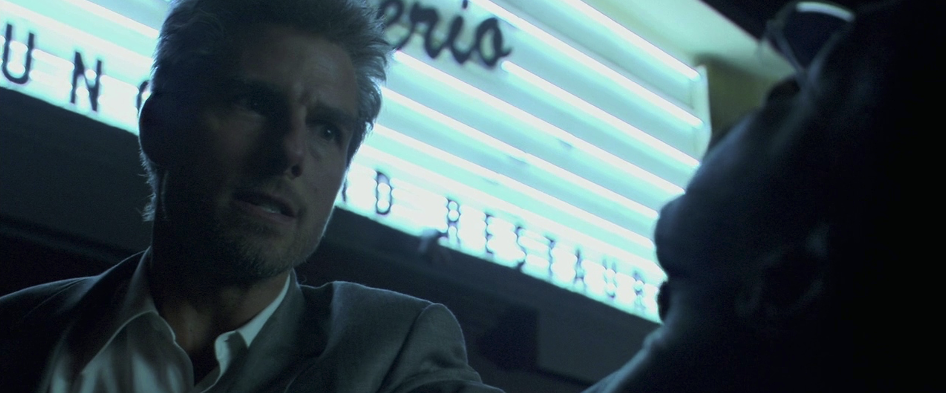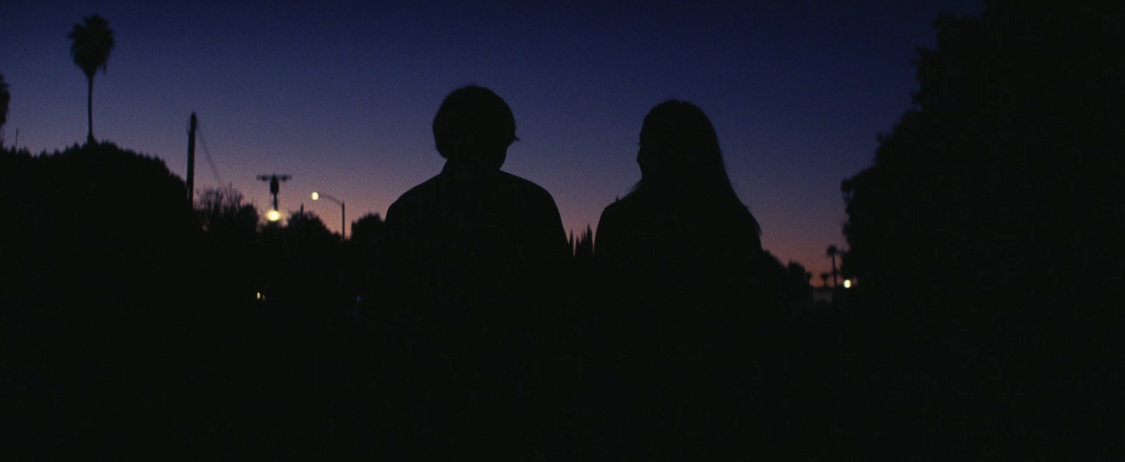 written by
written by ellis
︎On my life, this could be the most pretentious thing ever so I'll break down a few things before I get into this.
In film circles, we hear a lot about digital vs film. "Ermmmmm my favourite filmmaker said digital sucks so I guess it does!" vs "Ummmmmm well my favourite filmmaker said digital is better so that's my opinion". I'm not innocent in all of this but it begs the question to the outsider, what the fuck is the difference? Through most of the history of cinema, movies were shot on film; big manual cameras using physical film stock to record its images. The film reel which the images were recorded on are then treated to be edited and developed. All to be displayed by running the reel through a projector to display the film. There's different film stock formats going from the size of 8mm, 16mm, 35mm, 70mm and IMAX 70mm (the largest format).

But as technology got better in the 2000s and
2010s, it became default to shoot on digital cameras. Not a complete tragedy to
be fair, they are cheaper and easier to operate, allowing shooting in crazier
conditions and setups simply because the cameras aren't delicate. I can
admit, it is mostly cool but digital gives this perfect and clean look to
cinema. Which can look beautiful and great, I could name amazing digitally shot
stuff off the top of my head (reminder: add some pictures of that below so that
you all believe me). But film went to the backburner and rightfully so, why go
back? Why trade in efficiency for the dinosaur technology?
These things have been going through my mind recently as I've been noticing when something is shot on film or digital when watching something and realising how special film is as format and how much it adds to an experience.
These things have been going through my mind recently as I've been noticing when something is shot on film or digital when watching something and realising how special film is as format and how much it adds to an experience.

I am writing this after a rewatch of First Man
(2018), a biopic about Neil Armstrong, first man on the moon, I'm sure you all
know who that is. And the film mostly uses 16mm and 35mm with extreme handheld, humanist zooms and all. 16mm
for the more gritty and white knuckled flight sequences and 35mm for the
grounded scenes in NASA and with the Armstrong family, both formats allow us to
be immersed in the period but drawn the humanity of it in different context.
This works even more as the film switches to IMAX 70mm in the final moon
landing, expanding the aspect ratio to almost fill the screen and for the film
grain used in almost all of the film for clarity and space in the somewhat historic
moment. And I gained all of this from watching on my laptop by the way.

Another example was me being able to see
Interstellar (2014) in the BFI IMAX recently (biggest screen in the UK)
projected on IMAX 70mm. Now, I always liked this film but I never loved it until seeing it in this format, the large format space scenes shot in 70mm
still having this grand and awe inspiring scope which still hold up after years
and having the more intimate scenes shot in 35mm. Although it's still not my
favourite from Chris Nolan, seeing it on a film projection while being quite
contemporary, it had the feeling of a classic, like I was seeing someone's opus
unfold and I'd never had that experience with this film. The intimate scenes
felt even more close and human with how the imperfections of 35mm added to this
near apocalyptic dust earth portrayed in the film, the scope felt even larger,
clearer and optimistic overwhelming scale in where humanity could go with
planets, wormholes and Matt Damon (lauded star of Team America: World Police)
in 70mm. It's big but more awe-inspiring than scary.
![This shot kind of floored me when I saw it on a large format]()

Final example, and I actually saw this projected on 35mm and 70mm (the only difference is the screen size when it comes to projection for those who don't know), Licorice Pizza (2021). PTA is my favourite filmmaker of all time so I'll save all the stuff on how good I think it is but it also used film stock in such an interesting way. It's easy to base a film in the 70s and encapsulate the era in costume, soundtrack and sets but I think what is done here so amazingly is that it actually looks and feels like a film that could've came out in 70s. There's tenancy towards long but un-showy takes, where another director would easily show off their ability to stage and block a sequence with no cuts, Anderson treats like just as another tool in his box just like directors would in the 70s would as film wasn't so far removed from theatre; natural long takes and staging just made sense with everyone's background. Add some nice natural film grain and the immersion in period feels so deep along with how naturalistic and wacky the story is, the social taboos and Todd Rundgren’s “I Saw The Light” playing over heavy car radio static.

But these are all works from acclaimed and
A-list Hollywood directors; Damien Chazelle, Christopher Nolan and Paul Thomas
Anderson. They have enough influence to allow a huge studio to spend more on
expensive cameras simply because they like how it feels over digital. What
about the average person? People like you and me?
Obviously, if you're of a certain age, you remember disposable cameras which used film. Cheap cameras that only had a few shots and you'd take them to the local ASDA or wherever to get it developed. Now as we know, digital cameras arose but not only that, so did the smartphone and they slowly but surely became almost as reliable as a digital camera. Now of course, you can still get a DSLR and learn how to shoot but honestly, you can get a pretty good picture just from the latest iPhone with no expertise and why not? Its a quick and easy way to store memories, you can easily share it. But once again, something was lost.
In last few years, there's been a resurgence of film photography used in everyday life, where with digital photos from smartphones especially; the phone is pushing everything to make the picture look perfect, auto-stabilisation, natural colours, high definition where as with a film camera, the colours come out like a memorisation of reality rather than a recreation and shit, at least with some of the people I know; sometimes you don't even know if the photos are going to turn out good. And I feel like there's something special in that, rolling the dice on memory and documentation and just waiting for the payoff in results rather than the instant add to the photos app and inevitable retake of the photo because "I wasn't posing right!".
The resurgence of film stock in personal photos and in entertainment is interesting as a philosophy because technology as it progresses is a strive towards perfection, now we all know that's not possible but it happens anyway but eventually we got "perfection" (digital) and got sick of it and went back to old technologies. As much as it is exhilarating to chase, perfection itself is boring, it's all surface and doesn't feel real. I've felt like my most beautiful moments have been me being unaware of my flesh and bones and if they were in the right position or if I got through a sentence perfectly without tripping up on my words, I just existed and lived. Whatever flaws, (if you can call them that) in the moment didn't appear as flaws but just parts of my character, things that made me different and memorable as a human being. We're starting to see that in our technology, not even just cameras, the brick phone has made a recent reappearance to pull back from the fast paced nature of information that comes with a smartphone, while it was made fun of when we moved to iPhones and Blackberries. And maybe each day we're learning to take this approach with ourselves and the ones around us embracing our character in a world that wants to saw it all off to round, acceptable, grain-less edges.
Obviously, if you're of a certain age, you remember disposable cameras which used film. Cheap cameras that only had a few shots and you'd take them to the local ASDA or wherever to get it developed. Now as we know, digital cameras arose but not only that, so did the smartphone and they slowly but surely became almost as reliable as a digital camera. Now of course, you can still get a DSLR and learn how to shoot but honestly, you can get a pretty good picture just from the latest iPhone with no expertise and why not? Its a quick and easy way to store memories, you can easily share it. But once again, something was lost.
In last few years, there's been a resurgence of film photography used in everyday life, where with digital photos from smartphones especially; the phone is pushing everything to make the picture look perfect, auto-stabilisation, natural colours, high definition where as with a film camera, the colours come out like a memorisation of reality rather than a recreation and shit, at least with some of the people I know; sometimes you don't even know if the photos are going to turn out good. And I feel like there's something special in that, rolling the dice on memory and documentation and just waiting for the payoff in results rather than the instant add to the photos app and inevitable retake of the photo because "I wasn't posing right!".
The resurgence of film stock in personal photos and in entertainment is interesting as a philosophy because technology as it progresses is a strive towards perfection, now we all know that's not possible but it happens anyway but eventually we got "perfection" (digital) and got sick of it and went back to old technologies. As much as it is exhilarating to chase, perfection itself is boring, it's all surface and doesn't feel real. I've felt like my most beautiful moments have been me being unaware of my flesh and bones and if they were in the right position or if I got through a sentence perfectly without tripping up on my words, I just existed and lived. Whatever flaws, (if you can call them that) in the moment didn't appear as flaws but just parts of my character, things that made me different and memorable as a human being. We're starting to see that in our technology, not even just cameras, the brick phone has made a recent reappearance to pull back from the fast paced nature of information that comes with a smartphone, while it was made fun of when we moved to iPhones and Blackberries. And maybe each day we're learning to take this approach with ourselves and the ones around us embracing our character in a world that wants to saw it all off to round, acceptable, grain-less edges.